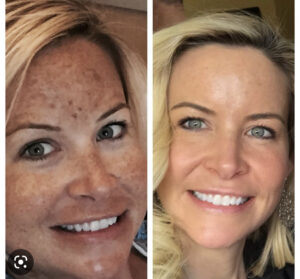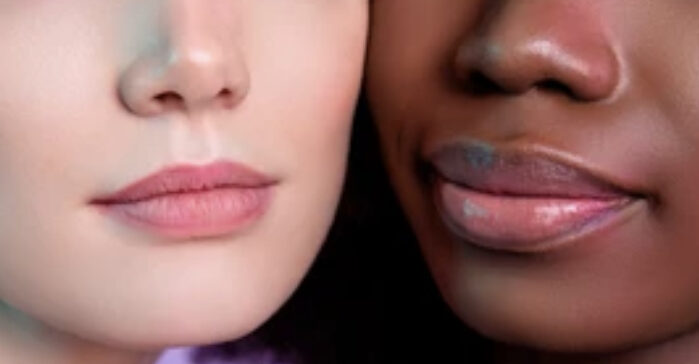
Pigmentation Peel
A chemical peel is a restorative cosmetic procedure that may help reduce the signs of aging on your face.
During a chemical peel, a dermatologist will apply a chemical solution to your skin. This solution peels away damaged skin cells, allowing healthy skin to grow in their place.
This may help improve common skin concerns, such as:
- wrinkles
- hyperpigmentation
- acne
- uneven skin texture
However, the exact results will depend on many factors, including the severity of your skin issues and the type of peel you receive.
In this article, we’ll take a closer look at the different types of chemical peels, their benefits, and what to expect during recovery.
Light chemical peel
A light chemical peel, or superficial peel, will lightly exfoliate your skin. It only removes the epidermis, which is your topmost skin layer.
A light chemical peel is usually used for:
- fine wrinkles
- uneven skin tone
- acne
- dry skin
This treatment uses mild chemical agents, so it’s usually safe to get light chemical peels every 2 to 5 weeks.
Medium chemical peel
A medium chemical peel is slightly stronger than a light peel. It removes your epidermis plus the top layer of your dermis, which lies beneath the epidermis.
A medium peel is typically used for:
- wrinkles
- uneven skin tone
- acne scars
You may need several treatments to get the results you want.
Deep chemical peel
A deep chemical peel removes your epidermis, along with the upper and middle layer of your dermis. It uses very strong chemicals, so you may need a local anesthetic before the procedure. This will help prevent pain and discomfort.
A deep chemical peel is best suited for:
- deeper wrinkles
- deeper scars
- precancerous skin patches
The effects of this peel can last for 10 years, so it’s done only once. You won’t need repeated treatments
Hyperpigmentation
In addition to acne scars and age spots, chemical peels can improve other forms of hyperpigmentation, such as:
- uneven skin tone
- melasma
- freckles
- surgical scars
- scars due to injury
- discoloration due to sun damage
Acne
Acne is a common inflammatory skin condition. It’s often treated with topical products or oral medication, but chemical peels may also help.
The procedure can:
- break down comedones (plugged hair follicles)
- decrease oil production
- kill bacteria
- reduce inflammation
- increase absorption of topical treatments
Light and medium chemical peels are usually used to improve acne
- .A TCA peel works by removing dead skin cells and stimulating new skin cell growth. People use TCA peels to try to get younger looking skin, and to treat certain skin conditions, like melasma and acne scarringThe different chemical solutions provide different results. The choice of chemical depends on your goal. You will work with your dermatologist to determine the depth of your peel.
- A light (“lunchtime”) chemical peel provides subtle improvement over time and is often done in a series. The outermost layer of skin is removed. This choice may be best if you have fine wrinkling, acne, uneven skin coloring or dry, rough sun-damaged skin to help promote a healthy glow. Recovery from this type of peel may be within hours to a few days but with little to no down time.
- A medium chemical peel gives your skin a smooth, fresh look. The outermost layer and the upper part of your middle skin layer are removed. This choice may be best if you have uneven or moderate skin discoloring, age spots, acne scarring or fine-to-moderate wrinkles. Recovery from this type of peel may take a week or more and require some down time.
- A deep chemical peel produces the most dramatic results. This chemical penetrates down to the lower middle layer of your skin. Recovery time is longer with a deep peel. This choice may be best if you have moderate lines and wrinkles, extensive sun-damaged skin, deep acne scars, blotchy skin, and/or precancerous growths called actinic keratosis. A deep chemical peel requires pretreatment for up to eight weeks. Your doctor will provide specific instructions. A deep chemical peel is a one-time only treatment if applied to your face and does have significant down time.
To prepare for your chemical peel, some general instructions include:
- Avoid tanning and direct sun exposure for two weeks before each treatment.
- Apply topical products (such as hydroquinone) as instructed before treatment to prepare your skin.
- Don’t use any products containing retinoids (such as tretinoin) one to two weeks before treatment, unless your physician tells you differently.
- If you have been prescribed oral antibiotics or an oral antiviral medicine, start taking it at least 24 hours before your chemical peel.
- Peel areas must be free of any open sores, lesions or skin infections.
Your doctor will give you specific instructions for your peel type and your unique skin condition.
Day of peel: Your skin will be thoroughly cleaned. If you are having a deep chemical peel, you will receive general anesthesia (you will be asleep).
The procedure: During a chemical peel, solution is applied to your skin. You may feel a warm to somewhat hot sensation that will last a few minutes. This is followed by a stinging sensation. To relieve the sting, a cool compress may be applied your skin. The chemical is then washed off and/or neutralized

